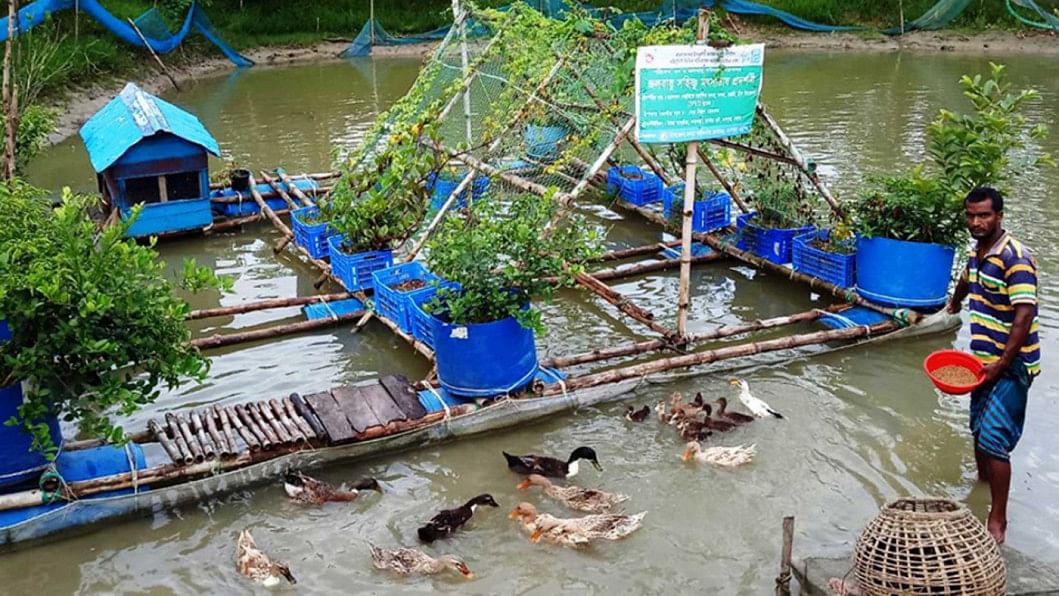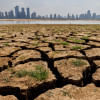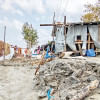Want to save biodiversity? Look to locally-led approaches

There is overwhelming evidence by now that climate change and biodiversity losses have already put the lives and livelihood of the world's population at serious risk. Scientists and practitioners are working hard to tackle these challenges and advocating for a combined approach of legal and social interventions. Rightly so, they often call for revising policies and regulations to prevent climate- and biodiversity-adverse activities from a legal perspective. At the same time, they suggest employing a community-focused approach to halt the ongoing climate and biodiversity degradation by involving local communities thought to be responsible for the problem. Such a holistic approach has gained significant momentum in tackling manufactured environmental disasters worldwide, including in Bangladesh. Unsurprisingly, policy dialogues and community-focused interventions remain central to most of Bangladesh's recently completed, ongoing, or forthcoming biodiversity conservation and climate change adaptation projects. However, while the community-focused approach often meets with success in the short term, the sustainability of such success remains questionable and thus needs serious rethinking.
To understand the problem, let me clarify that the traditional idea of community-focused biodiversity conservation or climate change adaptation relies on two simple assumptions. First, external government or non-government agencies will motivate, train, and provide initial logistics for climate change adaptation or biodiversity-friendly activities to the local communities. Second, local communities will continue the suggested practice after the external support is renounced. The idea is elegant. So, different national and international NGOs picked it up quickly and started implementing community-focused conservation and adaptation projects throughout Bangladesh from the early 90s.
As the practice has been taking place for about 30-plus years, we can now look at some old project sites. Unfortunately, we may discover that what has been hailed as a successful intervention in the short term can no longer be treated as successful. Local communities often abandon the suggested activities soon after the project support ends. But why so? Perhaps, the problem lies in how we plan and implement a community-focused project. Matching biodiversity conservation or climate change adaptation activities in line with the local community's preferences and culture are well-known challenges. Whether the scheduled activities offer short-term livelihood benefits to the local community also matters. Although planners draw from their experience or consult the locals to determine conservation or adaptation interventions, the local community's livelihood interests, preferences, and culture are rarely considered fully. As a result, local communities rarely own the project and discontinue the suggested activities.
Project evaluation fails to identify this discrepancy because assessment is usually conducted at the final stage of a project when external support is still in place. Such a problem is not limited to any particular area or implementing organisation; it is widespread, and we must address it.

One way to address this problem is to apply a local community-led approach, popularly known as the "locally-led approach (LLA)." Although the concept of LLA is often discussed for climate change adaptation, the idea is equally applicable to biodiversity conservation. Nevertheless, the LLA is community-focused but differs from our traditional practice in several ways. For example, external agencies play a prominent role in the conventional community-focused approach. In contrast, the local community plays a central role in the LLA. As the term "locally-led" implies, the local community's preferences, culture, and livelihood benefits are considered, and the community owns the project. So, the LLA can potentially overcome the common problems of our traditional conservation and adaptation interventions and may succeed in the long run. The floating vegetable garden in central Bangladesh and the community-led dam-building and mangrove-planting in southwestern coastal areas are examples of locally-led climate adaptation and biodiversity conservation.
Most of those ideas are championed by respective local communities. Subsequent projects in those areas extended the age-old practice and showed promising results. However, we must note that any successful intervention in one place may not be successful everywhere. For example, the locally-led floating vegetation garden idea is effective in central Bangladesh, but we cannot be sure that the coastal communities would equally prefer the concept. So, project planners should better consider the situation-specific locally-led approach.
That being said, complications could arise depending on the property rights/land tenure issue. Most often, community-focused approaches are suitable for government or community-owned land. However, individual preference matters most if the conservation and adaptation project targets an individual's land. In such a scenario, an individual-focused conservation or adaptation project is perhaps most suitable. Although many projects rent individual land and set up community-focused interventions, the strategy usually fails at the end of the project and should be avoided. Instead, the success of the individual-focused approach followed by the Department of Agriculture Extension in promoting agriculture and horticulture crops can be streamlined in climate change adaptation and biodiversity conservation. Brac recently piloted such an idea of individual-focused intervention under the "My Forest" project in Bagerhat and Patuakhali. Although the intervention shows initial promise, its long-term performance can be monitored.
Meanwhile, our traditional approach may still be helpful if the project is implemented on government land and proper monitoring and logistical support continue for a long period of time. The social forestry programme of the forest department in Bangladesh is such an example, and the programme is successful in achieving its overarching goal of reducing deforestation. However, we may not call the social forest programme a genuinely community-focused approach, but a participatory approach.
To conclude, community-focused biodiversity conservation and climate change adaptation strategies have been widely employed in Bangladesh for quite a long time. Still, most methods do not seem as sustainable as expected. So, we must recognise the problem in the first place and then find what is going wrong. We also need to understand the fine line separating the recently advocated locally-led approach from the traditional one. Then, depending on the context, we may go for a locally-led or an individual-focused method to ensure the sustainability of our biodiversity conservation and climate change adaptation interventions. Only this way can we build a climate-resilient, biologically diverse, and green Bangladesh, wherein we can live and prosper in harmony with nature.
Dr Shekhar R Biswas is a professor of ecology at East China Normal University in Shanghai.


 For all latest news, follow The Daily Star's Google News channel.
For all latest news, follow The Daily Star's Google News channel. 









Comments